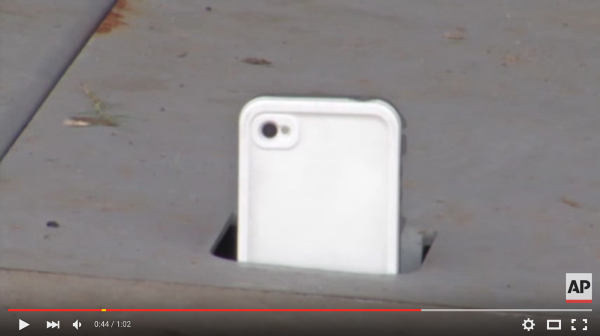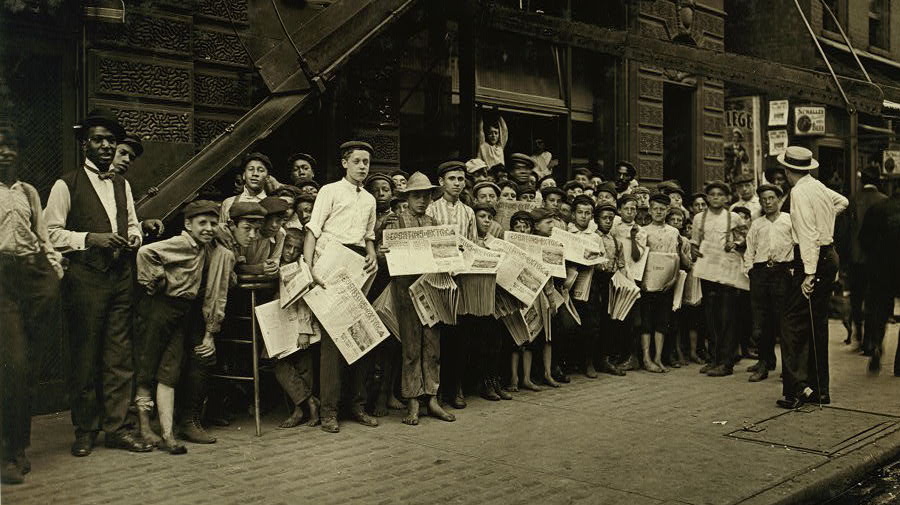This is the second in a two-part series on newsroom workflows for eyewitness media. Read the first part here.
What we do with social content once verified is really the part of the process that pays dividends. This is when you can actually showcase the incredible content that you have found and tell the stories that your audience are coming to you for.
This part of the newsroom verification workflow is by its very nature public so more consideration must be given to your actions. It is also essential that newsrooms devote as much time to this part of the process as they do to the discovery and verification stage. There is no point being able to find and verify material quickly if you can’t actually work with it efficiently once it is in the newsroom cycle.

Fergus Bell/Dig Deeper
In order to use the content, newsrooms will need to have a permissions/rights acquisition process. Securing access to content from the creator is usually the part of the entire workflow that takes the longest. For this reason it would be advisable to use the time that you are negotiating with sources or waiting for that message to be returned to work out how you can tell the story around that great piece of UGC.
Editorial Process
Editorial process is essentially about adding context to the image or video that you are hoping to publish. You are trying to tell the story behind the images. Your audience will likely have been able to find it when the news broke, its popularity might even be the reason you are wanting to or needing to use it in the first place.
Adding context also adds value. Take the example of the tornado that hit Moore, Oklahoma in 2013. Many videos had emerged showing the size and force of the twister and they were shared widely. Another video however, emerged a few days later.
It was shot vertically — the bane of a broadcast journalist’s existence — and didn’t really add anything new. But by this point there were crews on the ground and this meant that a story could be told that brought the video to life.
Two young men capture vertical video of the Moore, Oklahoma tornado passing overhead. Additional reporting by the AP gives the video context and adds clear value

The whole reason the video is vertical is that the hand holes of the shelter door were only just wide enough to squeeze the top end of a phone through.
In the newsroom
There should be a clear process for how UGC enters into the regular production cycle . There are often clear differences around the way this content surfaces but once it is verified it should be treated as any other content from a storytelling point of view. Work out how you connect the newsgathering operation (those who find and source the content) with editorial (those who are telling the story). Have clear policies for the way you reference UGC on your output. This also serves as a way to double check the process and ensure everything adds up, especially as additional sources will be used at this stage to back up the story.
Key workflow: Decide at what point you assign a journalist to write the story. Ensure that those communicating with the source are getting the information needed to tell the story that you want and that if there is somebody different sourcing it they should liaise with the person making communication. You often only get one shot at communicating with a source and if you are looking to add value you should always ensure you get certain information from them. Ensure that all production staff know how to refer to UGC.
Permissions/Usage
The way to actually approach a source during a breaking news event has been hotly debated recently. However, in order to secure permission for broadcast or publication there is little doubt that you need the consent of the owner. In securing permission, journalists always needs to consider when, where and how it will be used.
In the newsroom
Decide a process that works in your newsroom for reaching out to individuals who have content that you wish to use and consider limiting the number of people who do so during any single event. Open a dialogue with those in the organisation that can help you to establish legal wording relevant to your needs. For permissions that you do receive, make sure that staff pass them on to a central point for storage. Nobody should be going home mid-story with a permission pending that is likely to go to an inbox that won’t be accessible off shift.
Key workflow: Establish clear wording for securing the permission you need for:
- The region you are operating in
- The territories you are publishing in
- The form of media you are using the content on or in
Establish a method for storing the permissions you have received and circulate the details to everyone who needs them.
Editorial approval
Editorial sign-off is one of the final parts of the actual verification process. This is where the verification case you have built up for a piece of content gets its final set of eyes before being published. This is also likely to be the most senior, experienced set of eyes in the process.
The senior editor will have seen much of the output of your news organisation over a long period and will be in a strong position to tell if something has been used before, or if it is from an old event that the previous parts of the process haven’t picked up.
This person — or group of people — are also likely to have been disconnected from the nitty gritty of the verification process. They will be able to judge the verification case on the facts alone, in the same way that the audience will have seen it.
Most simply, unlike those deeply entrenched in the process, this person will be able to see the wood for the trees.
In the newsroom
Identify who can sign off on the process and ensure that it follows a similar form to that of other content. Nothing should ever go out with only one set of eyes and the same applies to verification.
Key workflow: Ensure that staff are fully aware of the sign off process ahead of breaking news so that it is clear in times of stress. Assign sign-off people for all types of shifts and during staff absences so that it never becomes an obstacle in what should now be a fast process.



